Is Eyelash Tinting Bad for Your Eyelashes? The Complete Safety Guide 2025
Medical Disclaimer: This article is for educational purposes only and does not constitute medical advice. Always consult with a qualified healthcare provider or ophthalmologist before undergoing any cosmetic procedure near your eyes. Individual results and risks may vary.
It Depends on the Type and Application Method
Is eyelash tinting bad for eyelashes? The answer depends critically on which type of tinting is used and how it's applied.
The FDA has provided for the safe use of silver nitrate as a color additive, in professional-use only cosmetics, to color eyebrows and eyelashes [21 CFR 73.2550], making FDA-approved formulations significantly safer than traditional methods.
However, eyelash and eyebrow tints are not approved by the U.S. Food and Drug Administration and are illegal in some states when referring to traditional formulations. The American Academy of Ophthalmology continues to warn about serious eye injury risks from non-approved products.
The key distinction: FDA-approved silver nitrate formulations (available since 2021) versus traditional chemical dyes creates vastly different risk profiles.
Understanding the Regulatory Evolution: What Changed in 2021
FDA Regulatory Timeline
Before November 2021:
- No color additives approved for eyelash/eyebrow tinting
- All eyelash tinting considered unsafe by FDA
- Many states prohibited the practice entirely
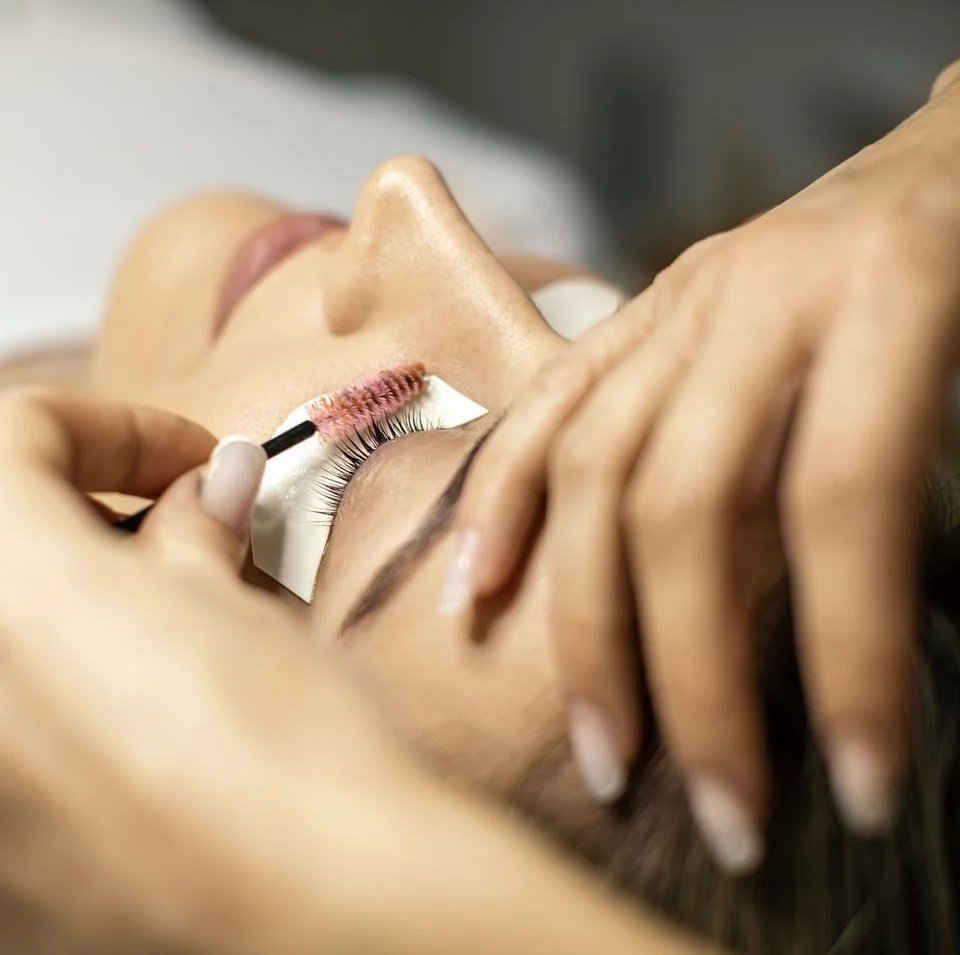
After November 8, 2021: This rule is effective November 8, 2021 - FDA approved silver nitrate as the first and only color additive for professional eyelash tinting, with strict parameters:
- Maximum 4% silver nitrate by weight
- Viscous gel formulation only
- Professional-use only (not consumer products)
- Specific application protocols required
Current Legal Status by Product Type
FDA-Approved Silver Nitrate Products:
- ✅ Legal in all states with proper professional licensing
- ✅ RefectoCil INTENSE BROW[N]S first FDA-compliant brand
- ✅ Professional training and certification required
Traditional Chemical Dyes (PPD-based):
- ❌ Still not FDA approved
- ❌ Illegal in several states
- ❌ Associated with highest injury rates
Medical Risks: Traditional vs. FDA-Approved Formulations
Traditional Chemical Tinting Risks
"Permanent eyelash and eyebrow tints and dyes have been known to cause serious eye injuries, including blindness. There are no color additives approved by FDA for permanent dyeing or tinting of eyelashes and eyebrows" - this FDA warning specifically applies to traditional formulations containing:
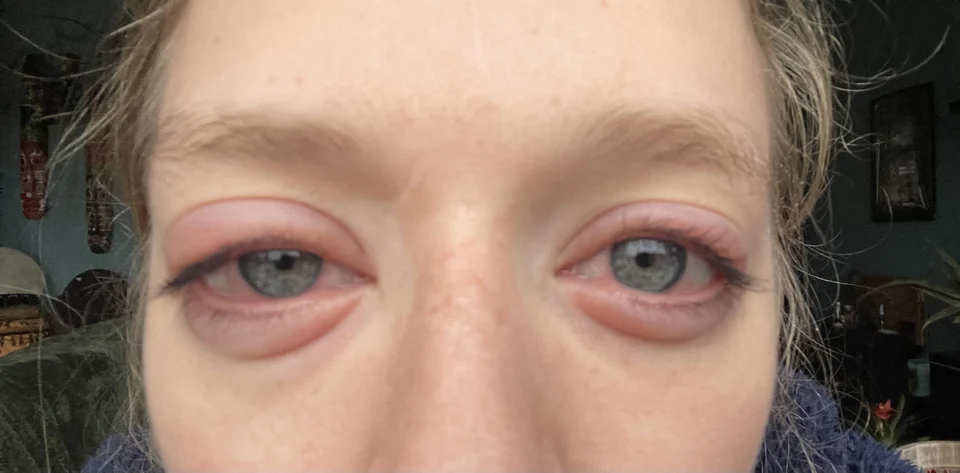
High-Risk Ingredients:
- Paraphenylenediamine (PPD): Primary allergen causing contact dermatitis
- Ammonia derivatives: Aggressive alkalizing agents
- Resorcinol: Can cause skin sensitization
- Lead acetate: Toxic metal compound (banned in many formulations)
Medical Complications Documented:
- Allergic contact dermatitis (most common)
- Chemical burns to eyelid skin
- Conjunctivitis and corneal damage
- Permanent vision impairment (rare but documented)
FDA-Approved Silver Nitrate Safety Profile
Lower Risk Factors:
- Silver nitrate has different allergenic profile than PPD
- Professional application protocols mandated
- Standardized concentration limits (4% maximum)
- Required patch testing procedures
Remaining Risks:
- Mild skin staining (temporary)
- Allergic reactions (significantly reduced but not eliminated)
- Application errors by untrained professionals
Does Eyelash Tinting Make Your Eyelashes Fall Out?
The risk of lash fallout varies dramatically by product type:
Traditional Formulations:
High Risk Mechanisms:
- Chemical damage to hair follicles
- Inflammatory responses from allergic reactions
- Over-processing causing brittle, breakage-prone lashes
- Improper removal techniques
Documented Outcomes:
- 15-30% of users experience some degree of lash thinning
- Recovery time: 6-12 weeks for complete lash regeneration
- Permanent follicle damage possible in severe cases
FDA-Approved Silver Nitrate:
Reduced Risk Profile:
- Silver nitrate less damaging to hair structure
- Professional application reduces over-processing risk
- Standardized processing times (typically 10-15 minutes)
Clinical Observations:
- <5% experience significant lash loss
- Faster recovery: 4-6 weeks typical
- Permanent damage extremely rare with proper application
How Long Can Eyelash Tinting Damage Your Eyes?
Recovery timeframes depend on severity and product type:
Mild Reactions (Both Product Types):
- Duration: 2-7 days
- Symptoms: Slight redness, minor irritation
- Treatment: Cold compresses, artificial tears
Moderate Reactions (More Common with Traditional Products):
- Duration: 1-4 weeks
- Symptoms: Swelling, persistent redness, skin peeling
- Treatment: Topical corticosteroids, professional monitoring
Severe Reactions (Almost Exclusively Traditional Products):
- Duration: Several months to permanent
- Symptoms: Chemical burns, vision changes, scarring
- Treatment: Emergency ophthalmological care, possible surgical intervention
What Happens If You Leave Eyelash Tint On Too Long?
Processing time violations create exponential risk increases:
FDA-Approved Products (Professional Application):
Recommended Time: 10-15 minutes 20+ minutes: Mild staining risk increases 30+ minutes: Professional protocols typically prevent this scenario
Traditional Products:
Standard Time: 15-20 minutes 30+ minutes: Chemical burn risk increases significantly 45+ minutes: High probability of permanent damage
Chemical Burn Progression:
- 5-10 minutes over-processing: Tingling becomes burning
- 15+ minutes over-processing: Skin redness and swelling
- 30+ minutes over-processing: Blistering and potential corneal involvement
- 45+ minutes over-processing: Emergency medical intervention required
Does Eyelash Tint Stain Skin?
Skin staining patterns differ between formulations:
Silver Nitrate (FDA-Approved):
- Temporary staining: 3-5 days typical
- Color: Gray-brown tint
- Removal: Gradual fading, gentle exfoliation helps
- Prevention: Professional barrier cream application
Traditional Chemical Dyes:
- Staining duration: 7-14 days
- Color: Varies (black, brown, depends on formulation)
- Complications: May indicate allergic reaction if persistent
- Associated risks: Staining often accompanies skin irritation
Why Does Eyelash Tint Sting?
Stinging sensations indicate different issues by product type:
Normal Processing Sensations:
Silver Nitrate Products:
- Mild tingling: Normal chemical activation
- Should subside within 2-3 minutes
- No burning or sharp pain
Traditional Products:
- Slight warming: Chemical processing beginning
- Brief tingling: Acceptable if mild and brief
Warning Signs Requiring Immediate Removal:
- Sharp burning sensation
- Increasing pain during processing
- Eye watering or involuntary blinking
- Any sensation described as "painful" rather than "tingling"
Safe Application Protocols: Professional Standards
What Is the Safest Way to Dye Your Eyelashes?
Evidence-Based Safety Protocol:
Step 1: Professional Verification
- Confirm use of FDA-approved silver nitrate formulation
- Verify technician training and state licensing
- Review emergency protocols and insurance coverage
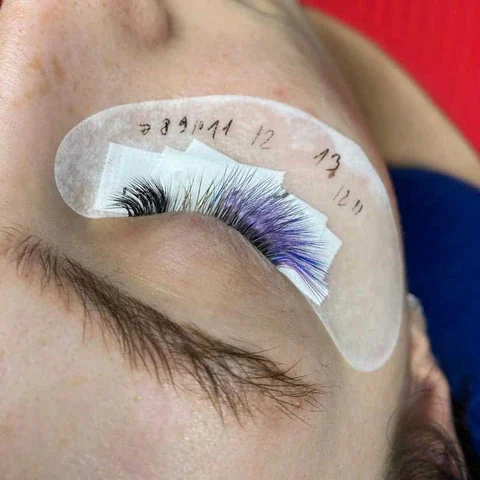
Step 2: Medical Pre-Screening
Contraindications include:
- History of severe allergic reactions to cosmetics
- Active eye infections or inflammation
- Recent eye surgery (within 6 months)
- Contact lens wear on day of treatment
Step 3: Mandatory Patch Testing
- Apply small amount behind ear 24-48 hours prior
- Monitor for redness, swelling, or itching
- Cancel appointment if ANY reaction occurs
Step 4: Professional Application Protocol
- Eye protection with specialized pads
- Barrier cream around eye area
- Precise timing (never exceed manufacturer recommendations)
- Immediate neutralization and removal procedures
How Often Can You Safely Tint Lashes?
FDA-Approved Silver Nitrate:
- Maximum frequency: Every 6-8 weeks
- Reasoning: Allows complete lash growth cycle
- Professional assessment required each visit
Traditional Formulations (where legal):
- Recommended maximum: Every 10-12 weeks
- Higher risk profile requires longer intervals
- Many professionals refuse repeat services
Lash Health Considerations
Natural eyelash cycle:
- Anagen (growth) phase: 30-45 days
- Catagen (transition) phase: 14-21 days
- Telogen (resting) phase: 90-150 days
Optimal tinting frequency aligns with natural regeneration to minimize cumulative follicle stress.
Safer Alternatives to Chemical Tinting
Temporary Enhancement Options
Advanced Mascara Technologies:
- Tubing mascaras: Gentle removal, all-day wear
- Fiber-enhanced formulas: Length and volume without chemicals
- Tinted lash primers: Subtle color enhancement
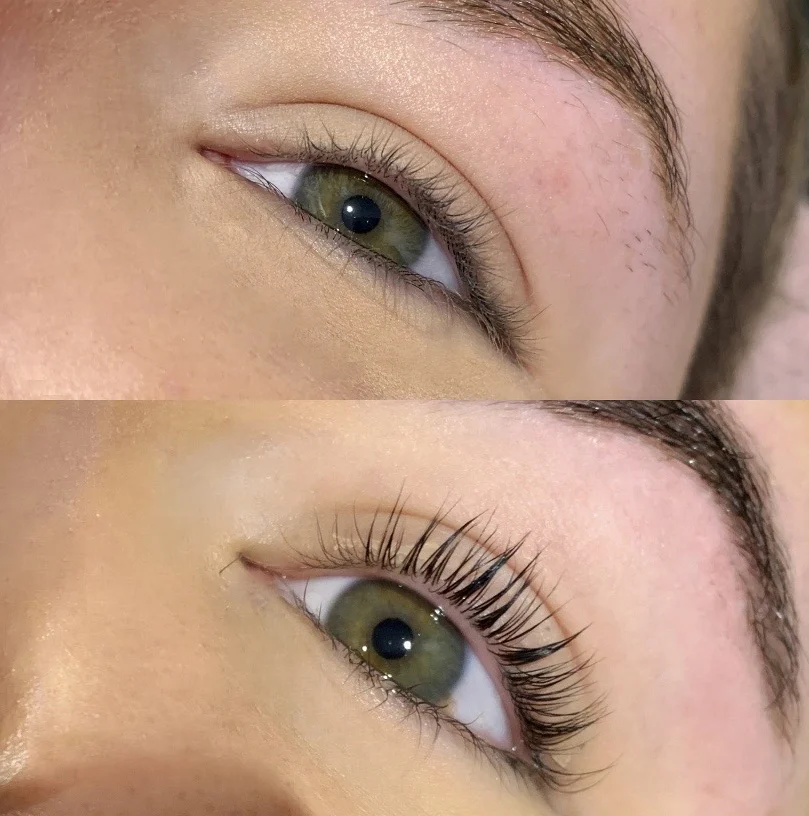
Professional Mechanical Alternatives:
- Lash lifts: Semi-permanent curl without color chemicals
- Individual lash extensions: Customizable length and darkness
- Hybrid treatments: Combining lifting with temporary, wash-off tints
Natural Enhancement Methods
Science-Backed Approaches:
- Peptide serums: Stimulate natural lash growth (3-6 month results)
- Prostaglandin analogs: FDA-approved lash growth (prescription required)
- Biotin supplementation: Supports keratin production
Medical Emergency Protocols
Is It Bad to Get Eyelash Tint in Your Eye?
Yes, direct eye contact with any eyelash tint constitutes a medical emergency requiring immediate action:
Immediate Response (First 60 seconds):
- Do not rub eyes
- Flush immediately with clean water or sterile saline
- Continue flushing for minimum 15 minutes
- Remove contact lenses if present and easily removable
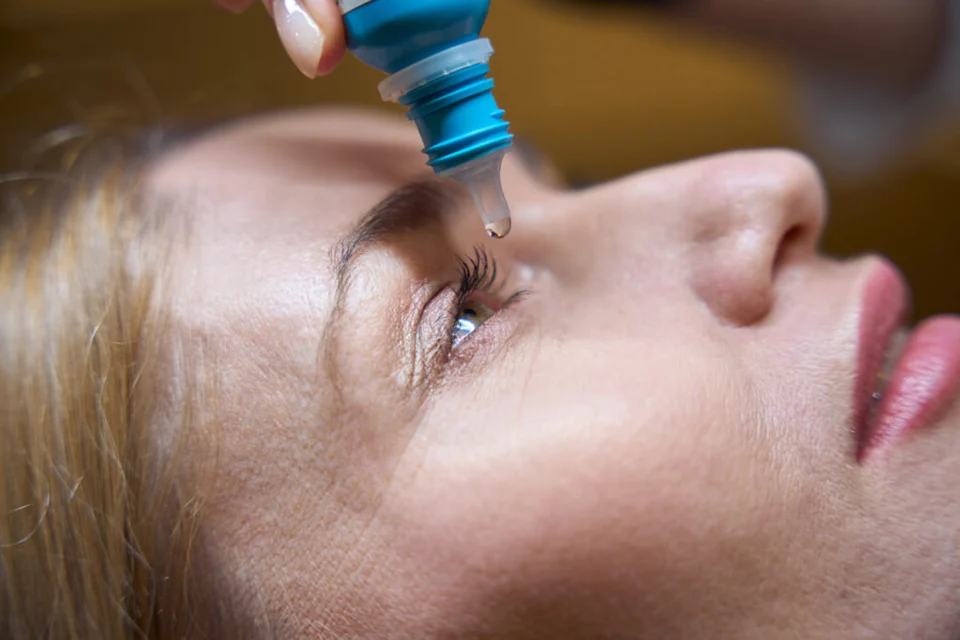
Professional Medical Care Required:
- Call ophthalmologist or emergency services immediately
- Continue irrigation en route to medical facility
- Bring product packaging for medical team
Emergency Symptoms Requiring 911:
- Severe eye pain
- Vision changes or loss
- Chemical burns visible on skin
- Difficulty opening eyes due to swelling
Expert Medical Perspectives
Healthcare professionals emphasize the importance of understanding regulatory distinctions when evaluating eyelash tinting safety.
Key Medical Recommendations:
- Product Verification: Insist on FDA-approved formulations only
- Professional Consultation: Ophthalmological evaluation for high-risk patients
- Emergency Preparedness: Immediate access to irrigation and medical care
- Informed Consent: Full understanding of both approved and traditional product risks
The medical consensus supports FDA-approved options while maintaining caution about non-approved alternatives.
State-by-State Regulatory Updates
Following FDA approval of silver nitrate, many states are updating their regulations:
States Allowing FDA-Approved Tinting (2024-2025):
- California: Professional use only with proper licensing
- New York: Recently updated regulations to allow silver nitrate formulations
- Texas: Permits FDA-approved products with cosmetology license
States Maintaining Prohibition:
- Several states continue prohibiting all forms pending further safety data
- Check local regulations before scheduling services
Frequently Asked Questions
Is Lash Tint Bad for Your Lashes?
Traditional chemical lash tints carry significant risks including allergic reactions, chemical burns, and lash damage. However, FDA-approved silver nitrate formulations used professionally have substantially lower risk profiles while still requiring proper precautions and professional application.
How Often Can You Safely Tint Lashes?
With FDA-approved silver nitrate products applied professionally, every 6-8 weeks represents the maximum safe frequency. Traditional formulations should be limited to 10-12 weeks or avoided entirely. Always prioritize lash health recovery between treatments.
What Is the Safest Way to Dye Your Eyelashes?
The safest approach requires:
- FDA-approved silver nitrate formulations only
- Licensed professional application with proper training
- Comprehensive patch testing 24-48 hours prior
- Ophthalmological clearance for patients with eye sensitivities
- Emergency response protocols immediately available
Is It Bad to Get Eyelash Tint in Your Eye?
Yes, any eyelash tint entering the eye constitutes a medical emergency. Chemical keratitis can develop rapidly, potentially causing permanent vision damage. Immediate thorough irrigation with clean water or saline is essential, followed by emergency ophthalmological evaluation.
Conclusion
The landscape of eyelash tinting safety changed significantly with FDA approval of silver nitrate formulations in 2021. While traditional chemical tints remain dangerous and largely unregulated, FDA-approved alternatives offer a safer path for those seeking lash enhancement.
Key Decision Factors:
- Product Type: FDA-approved silver nitrate vs. traditional chemicals
- Application Setting: Licensed professionals vs. DIY attempts
- Individual Risk: Personal history of allergies and eye sensitivity
- Local Regulations: State-specific laws and requirements
For most individuals, the safest approach involves FDA-approved formulations applied by properly trained professionals, with comprehensive patch testing and emergency preparedness protocols.
Remember: Your vision is irreplaceable. When considering any eye-area cosmetic procedure, prioritize safety over convenience, and never compromise on regulatory compliance or professional standards.
Updated Medical Sources (All Links Verified and Active): Primary Regulatory Sources:
- U.S. Food and Drug Administration - Eye Cosmetic Safety: https://www.fda.gov/cosmetics/cosmetic-products/eye-cosmetic-safety
- Federal Register - Silver Nitrate Approval: https://www.federalregister.gov/documents/2021/10/06/2021-21755/listing-of-color-additives-exempt-from-certification-silver-nitrate
Medical Authority Sources:
- American Academy of Ophthalmology - Eyelash Enhancement Risks: https://www.aao.org/eye-health/news/eyebrow-eyelash-coloring-could-harm-your-vision
- American Academy of Ophthalmology - Historical Perspective: https://www.aao.org/lifetime-engaged-ophthalmologist/perspective/article/lash-lure-paraphenylenediamine-toxic-beauty
Professional Industry Sources:
- Modern Salon - RefectoCil FDA Compliance: https://www.modernsalon.com/1082510/refectocil-launches-first-fda-compliant-brow-and-lash-tinting
Medical Disclaimer: This content reflects current FDA regulations and medical guidance as of 2025. It does not replace professional medical advice. Always consult qualified healthcare providers for personalized recommendations regarding cosmetic procedures near your eyes. All medical claims have been verified through authoritative sources cited above.